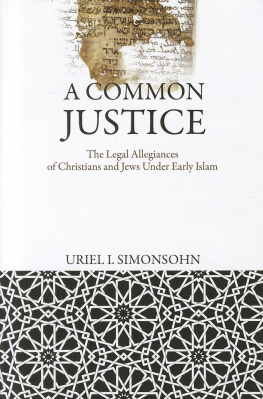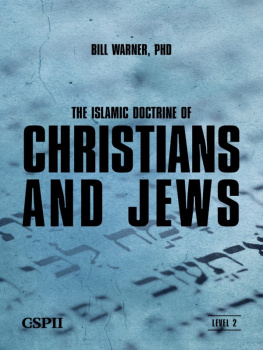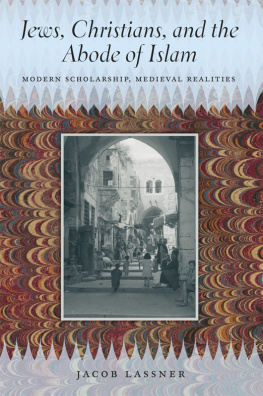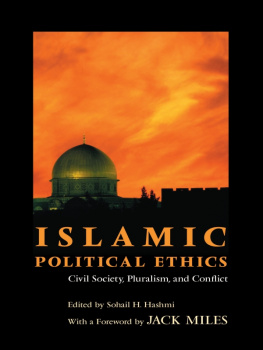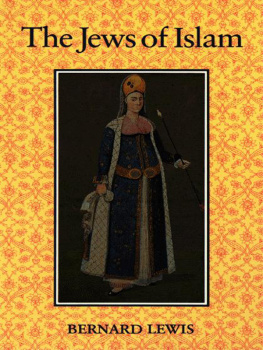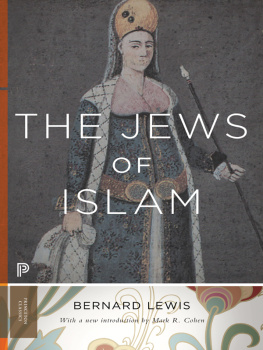Contents
Page List
Guide

A Common Justice
DIVINATIONS: REREADING LATE ANCIENT RELIGION
Series Editors
Daniel Boyarin, Virginia Burrus, Derek Krueger
A complete list of books in the series is available from the publisher.
A COMMON
JUSTICE

The Legal Allegiances of Christians and Jews under Early Islam
URIEL I. SIMONSOHN

UNIVERSITY OF PENNSYLVANIA PRESS
PHILADELPHIA
Copyright 2011 University of Pennsylvania Press
All rights reserved. Except for brief quotations used for purposes of review or scholarly citation, none of this book may be reproduced in any form by any means without written permission from the publisher.
Published by
University of Pennsylvania Press
Philadelphia, Pennsylvania 19104-4112
www.upenn.edu/pennpress
Printed in the United States of America on acid-free paper
10 9 8 7 6 5 4 3 2 1
Library of Congress Cataloging-in-Publication Data
Simonsohn, Uriel I., 1971
A common justice : the legal allegiances of Christians and Jews under early Islam / Uriel I. Simonsohn. 1st ed.
p. cm. (Divinations : rereading late ancient religion)
Includes bibliographical references and index.
ISBN 978-0-8122-4349-9 (hardcover : alk. paper)
1. Legal polycentricityMiddle EastHistory. 2. Conflict of lawsMiddle EastHistory. 3. Conflict of lawsJurisdictionMiddle EastHistory. 4. Conflict of laws (Islamic law)Middle EastHistory. 5. Conflict of laws (Canon law) 6. Conflict of laws (Jewish law) I. Title. II. Series: Divinations.
K236.S56 2011
340.5dc22
2011011279
In memory of my friend Shay Green (19712000)
CONTENTS

NOTE ON TRANSLITERATION

The transliteration of Arabic and Judaeo-Arabic in this book follows the system of the International Journal of Middle Eastern Studies.
Aramaic and Syriac are similarly transcribed, with the following exceptions:
sh =
Soft bgd kft letters are not indicatedthus, kh = k, th = t, etc.
Vocalization of Syriac is primarily East Syrian.
Long vowels: a = ; u = ; o = (e.g., i )
Epsilon =
Hebrew follows the system of the Association for Jewish Studies Review, yet whereas Hebrew words that appear in Judaeo-Arabic texts are indicated by the transliteration of as , as , and as , the same consonants that appear in original Hebrew texts will occur as tz, t, and h, respectively.
The transliteration of Pahlavi follows the system of D. N. MacKenzies Concise Pahlavi Dictionary.
Introduction
The fragmentary remains of Christian and Jewish legal documents composed in the Eastern Mediterranean in the first five hundred years of Islamic rule reveal that Christian and Jewish religious elites were preoccupied with the fact that their coreligionists were taking legal cases outside the community for litigation in what appear to have been primarily Islamic courts. This book examines the legislative response of Christian and Jewish religious elites to the problem posed by the appeal of their coreligionists to extra-confessional judicial institutions. Focusing on the late seventh through the early eleventh century in the region between Mesopotamia in the east and North Africa in the west, the study explores the multiplicity of judicial institutions that coexisted under early Islamic rule as part of the complex array of social obligations that bound individuals across confessional boundaries. Contrary to the notion of a non-Muslim autonomous existence in a rigid social setting, strictly demarcated along confessional lines, a comparative study of Christian and Jewish legal behavior under Islamic rule exposes a considerable degree of fluidity across communal boundaries. Such transcendence of religious affiliation threatened to undermine the position of traditional religious elites. In response, these elites acted vigorously to reinforce communal boundaries, censuring recourse to external judicial authorities and threatening transgressors with excommunication.
Maintaining judicial power as a means of sustaining social power and religious boundaries was of great importance for Christian and Jewish elites even prior to Islamic rule. The sages of the Mishnah (the tannaim) as well as the early church fathers had been preoccupied with similar, if not exactly the same, concerns. In early rabbinic Judaism, the discussion dealing with appeal to Gentile courts (arkhaot shel goyim) reflects an ambiguous approach. Despite their general opposition, the early rabbis permitted recourse to non-Jewish courts for purposes of issuing evidentiary documents, such as deeds of sale and loan, and for coercing recalcitrant litigants to obey the decisions of Jewish courts. Yet while the early Christian position appears to have been much firmer in its objection to the use of nonecclesiastical courts, its exact meaning as to the identity of these courts remains unclear. Early Christian sources use a variety of expressions when referring to nonecclesiastical courts and judges, such as secular, outsiders, and nonbelievers. In general, the early church fathers argued, litigation should be avoided; yet if inevitable, it should be pursued only before the saints, the appointed bishops.
It is therefore evident that the rise of Islam and its subsequent rule did not trigger Christian and Jewish judicial preoccupations. The reliance of non-Muslim confessional leaders on legal principles formulated in the pre-Islamic period and their resort to some of the rhetorical motifs that had already been employed by their predecessors attest to the endurance of these concerns. Nonetheless, the frequency of references made by non-Muslim leaders to the problem of recourse to extra-confessional judicial institutions as well as the high tones in which they often expressed their objections in the period following the Islamic conquest suggests not merely a continuity but also an intensification in their concerns.
The East Syrian and West Syrian Churches under Early Islamic Rule
Two Eastern Christian churches are at the center of this study: the East Syrian (so-called Nestorian) and West Syrian (Jacobite or Syrian Orthodox) Churches. The history of these churches and their parallel formation should be traced back to the Christological disagreements of the fifth century. The theological controversies on the subject of the human and divine natures of Christ dominated the ecumenical councils of Ephesus (A.D. 431) and Chalcedon (A.D. 451). It was in these controversies that the formation of the East Syrian and West Syrian Churches was conceived. The council of Ephesus saw the climax of the controversy between the Dyophysites, who adhered to the doctrine of two natures in Christ; and the Miaphysites, those in the Roman Empire who opposed this interpretation and argued for a single nature.
Twenty years later, at Chalcedon, a failed attempt to reconcile Miaphysite factions resulted in a second blow to Roman aspirations for ecclesiastical unity. By now, the adherents of a Miaphysite Christology had begun to adopt sectarian features.

